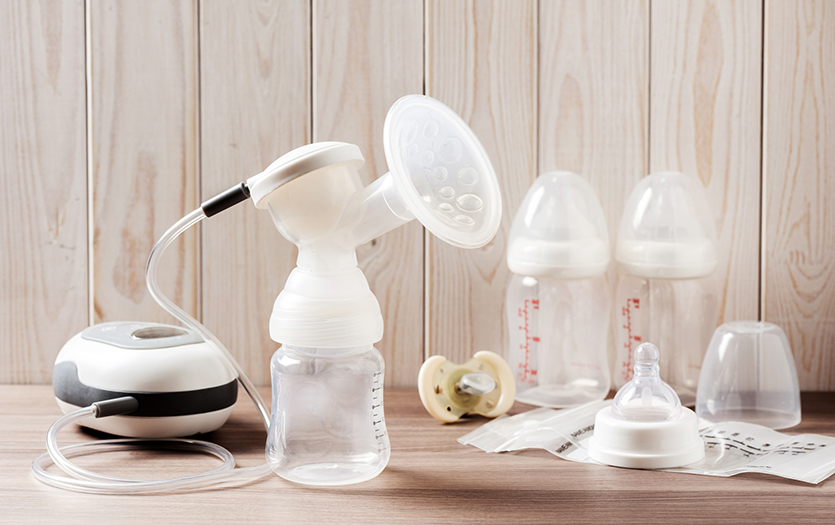
This post was written by Michelle Harlan RN, BSN, birth planner, Parkview Noble Hospital.
Whether you’re heading back to work, out for an evening or want your partner to feed your baby, most breastfeeding moms will have a time when they want to pump their breast milk. Having expressed breast milk means your baby can drink your breast milk from a bottle. Knowing when to start and how often to pump can feel daunting at first, but most mothers quickly get the hang of it. To help out, here are a few pumping questions that I hear often.
Should I start pumping right after my baby is born?
If you are exclusively breastfeeding, there is no need to pump for the first three weeks of your baby’s life. Your baby will regulate your supply, so you don’t want to introduce the pump too soon and make your body think you’re feeding twins.
Instead of pumping during this time, some women like to use a breast milk collector. There are different kinds you can choose from. One type is a shell that sits inside your bra and collects milk that may leak. Another type is a silicone collector that looks like a bottle. This type uses suction to stay on your breast while you are feeding your baby off the other breast. The suction style can cause an oversupply, so they should be used with caution and only if you feel full/engorged on the opposite breast you’re feeding baby from.
For moms who choose to pump exclusively, you should pump every 2-3 hours around the clock for the first three weeks. At three weeks, you can do it every 3 hours throughout the day and at least once at night.
Read: How to get the most out of pumping sessions.
How often should I pump?
Once baby is three weeks old, I recommend you start pumping twice a day if you plan to go back to work. My recommendation is to pump after the first feeding of the day and after the last feeding of the day—always after feeding off both sides.
If you are away from baby, it is also recommended that you pump every 3 hours.
How much breastmilk is normal when pumping?
Every mom is different. On average, when you first start pumping most women get 0.5 – 2 oz total between both breasts when pumping after a feeding session with their baby. However, especially for exclusively breastfeeding mothers, it’s very dependent on the person and so it’s hard to generalize or say an average.
How much milk should I pump and store?
When you return to work, ideally, what you pump on Monday would be the amount of milk you would send with baby to be used Tuesday, and so on. However, having a little bit of a stash for backup is a good idea. Breast milk can be frozen and stored in the back/bottom of a deep freeze or refrigerator freezer. A great idea is to freeze milk in 4-ounce increments. Lay the breast milk bags flat to freeze and store upright in a box or other storage container in the freezer to keep them organized and save space.
Quick pumping tips
- If exclusively breastfeeding, letting your baby regulate your supply is ideal.
- Pumping a little to boost supply and have a backup stash in the freeze is a good idea for all moms.
- Change your pump parts such as membranes, duckbills, flanges and backflow protectors every two months to keep your pump working at its best.
More helpful articles
7 simple ways dads can help with breastfeeding
Troubleshooting common breast pumping issues
A checklist to prepare for breastfeeding
How to boost your breastmilk supply
What to eat as a breastfeeding mom
Resources for new moms
Parkview offers a range of classes and support groups to educate and encourage breastfeeding mothers. Visit our list of Classes and Events to see if an option works for you or talk to your nurse navigator about other lactation support resources available to postpartum women.



